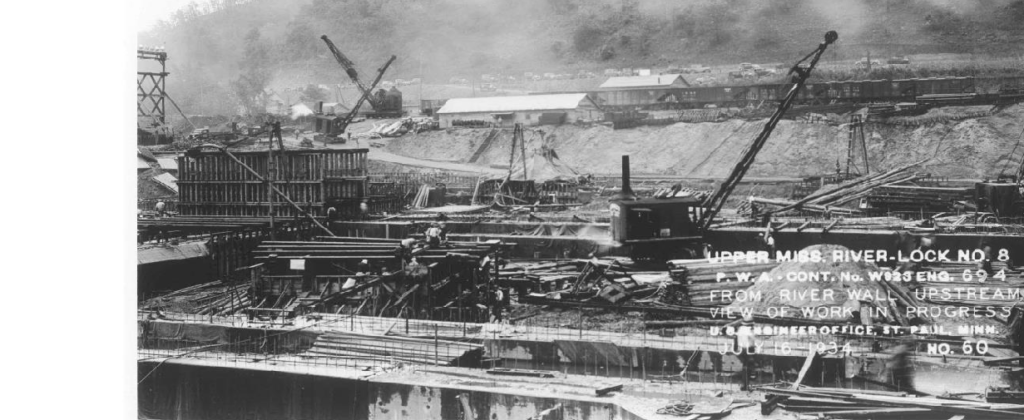
The Great River Road Interpretive Center has a new exhibit to call its own. We are proud to be able to display the history of the construction of Lock and Dam 8 on the Mississippi River built just up the road from the hatchery at the Genoa Wisconsin site. This pictorial history is being displayed in the local history room of the Center, and was compiled by local historian Anne Muirhead. Included is the method of diverting the mighty Mississippi to allow for construction, the construction of the retaining dike and spillway, the construction of the locks using historic steam shovels, and pictures of the local crews of the Works Progress Administration (WPA). The WPA was a depression era work program initiated by the Roosevelt Administration to put people back to work on public works projects across the country. Also included in the pictures is an image of a steam powered paddleboat moving down the River, the historic mode of transportation at the time. Paddleboats were used due to their low draft, or profile in the River, that allowed them to move through shallow areas safely without running aground in the pre-lock and Dams reaches of the River. Once the navigation system was constructed and in use, a navigation channel of 9 foot depth is now maintained, allowing the current barges to transport their goods on the River. The dike at Genoa is over 3.3 miles long and the dam structure is 934 feet long. The lock can accommodate barges with lengths of over 500 feet long, and typically moves over 16 million tons of cargo down the River annually. The Great River Road Interpretive Center was built as a collaborative effort with the National Scenic Byways Program and the U.S. Fish and Wildlife Service, and its mission is to educate and inform Great River Road travelers on the unique geography, natural history and local history of the region, while instilling a conservation message to the public. For more information about the center, please see our Facebook site, or feel free to call the station at 608-689-2605. By Doug Aloisi
